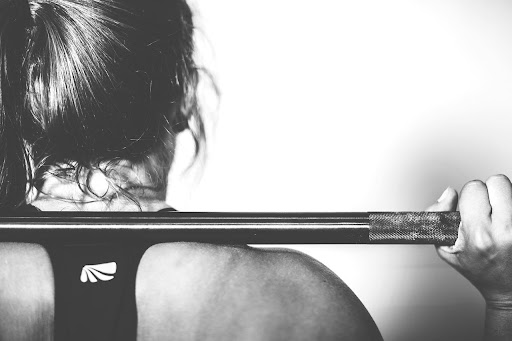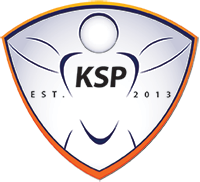
Corrective Exercise Solutions for Athletes with Back Pain and Joint Pains
Pain comes as an added feature in every athlete’s life. Whether it is pain from a sporting injury or a chronically painful body part, there is no way to escape the toll that rigorous physical activity has on the body.
A majority of athletes suffer from back and joint pains at some point in their lives. This kind of pain impacts the performance and ability of an athlete, apart from making daily tasks slightly tougher.
Every athlete knows that debilitating pain can be fatal to their career. Often, even though there is no external injury to be treated, chronic pain might indicate an internal issue that must be addressed.
There are several corrective exercises that can help alleviate back pain and joint aches in athletes. Before we come to those, it is important to note that in most cases, precautionary measures work better than corrective ones.
At Kinetic Sports Performance and Football University, we focus on enhancing athletic performance while ensuring a lower risk of injury. Our professionals work with an integrated functional approach to create performance plans for athletes to elevate their efficiency levels.
If you are an athlete already suffering from back and joint pains, we also have corrective solutions that can help optimize your performance and provide relief in the long run.
Back Pain in Athletes
Back pain is one of the most common ailments that athletes face. In a 2019 study, it was observed that the lifetime prevalence of back pain in elite athletes is 85%. The most common form of back pain for an athlete is that of the lower back.
This can lead to a hindrance in training and playing opportunities, general discomfort, and more serious sporting injuries. Athletes most affected by back pain may include gymnasts, weight lifters, divers, football players, golfers, and so on.
Causes of Back Pain
There can be various causes of back pain in athletes, both recurring and sudden. Often, the pain is a symptom, not the cause. It is important to identify the root cause of your back pain before taking corrective measures.
Some possible causes of back pain in active athletes can be:
- Overexertion
- Weight issues
- Poor posture
- Poorly designed chairs
- Spine arthritis
- Small fractures
- Sporting injuries
- Muscle strain
- Herniated disc
- Poor physical conditioning
- Facet joint dysfunction
- Spondylosis
- Spinal instability, and so on.
The best bet is to consult a doctor for the correct diagnosis before taking corrective actions on your own. Each type of injury or cause requires specific attention and treatment. In general, there are stretches and exercises that you can perform safely at home to get improved results and increase mobility.
Corrective Exercise Solutions for Athletes with Back Pain
The most effective way of tackling back pain is through a combination of an exercise program and therapy to improve posture. Core exercises go a long way in strengthening your back and abdomen muscles, which in turn support your spine.
You can try these exercises to reduce chronic back pain.
Foam Roll Adductors
This is a great solution for lower back pain.
- Simply lie face down on the yoga mat with one knee bent and the foam roller just inside the knee on the inner side. Then, slowly roll the foam roller toward your groin and back toward the knee.
- If a specific spot feels tender, hold the roller there for a few seconds to one minute.
- Avoid this exercise if you feel any tingling sensation or nerve pain.
You can also stretch your adductors while standing up and bending the knee on one side.
For athletes suffering from back and lower back issues, this exercise can provide relief.
Work on Your Core
Most core exercises target the back and abdomen. To get long-term relief from sports-related back pain, perform core exercises like:
- Bird dog: Start in a tabletop position with wrists under your shoulders and knees under your hips. Then, extend your right arm forward and left leg backward, keeping your hips in line with the floor. Repeat with the other arm and leg.
- Leg press: Lie face up with your legs in a tabletop position, contract your abs, and press your lower back to the ground. Then, crunch up a few inches with your hands placed in front of your quads. Hold this position.
- Forearm plank: Perform the plank exercise with your elbows and forearm on the ground.
- Side plank: Place your left hand on the floor underneath your left shoulder and extend your legs in a way that your body forms a long line. Stack the right foot on top of the left. Repeat on the other side.
- Lunges: Perform both forward and reverse lunges for maximum impact.
Don’t Forget Squats
Squats help strengthen your spine by flexing and lengthening it. If you have lumbar pain, squats are the way to go. Include this exercise in your daily routine to address back pain and improve pelvic movement.
Joint Pains in Athletes
Athletes are at a higher likelihood of suffering from joint pains compared to non-athletes around the world. A study observed that every second former cricketer had been suffering from joint pain, and an alarming number of them had been diagnosed with osteoarthritis.
To prevent such occurrences, it is essential for athletes in all fields to address joint pains immediately with corrective exercises. But before proceeding with physical activity, it is important to diagnose the cause of such pains correctly.
Causes of Joint Pains
There can be many causes of pain in athletes that develop in the knees, elbows, shoulders, hands, and hips. They include:
- Overexertion
- Wear and tear in muscles
- Osteoarthritis
- Playing position
- Body mass and muscle weight
- Ligament and meniscal tears
- Sporting injuries, and so on.
Depending on which joint is affected, you can seek expert opinion on which exercises can help to address the pain in the best way.
Corrective Exercise Solutions for Joint Pains in Athletes
Joint pain, if not treated correctly, can lead to more serious conditions in the future. This can be harmful to an athlete’s career. The best way to deal with joint aches is to get them diagnosed early on and set up an exercise routine to relieve some of the pain.
Here’s what you can do to help ease the pain.
Stretching
Stretching exercises work best for soothing joint pain. Depending on where it’s hurting (knees, ankles, arms, hips, etc.), you can include stretching activities in your daily workout routine. Try stretching before and after your other exercises to get the best results over time.
Some helpful stretches can be:
- Lunging hip flexor
- Standing calf stretch
- IT band foam roller
- Side lunges, and so on.
Walking and Cycling
Simple activities like walking and cycling can help with joint pains, especially in the leg area. Your goal is to keep the joints moving to avoid further damage. Cycling or spinning is helpful for ankle injuries as the weight is mostly taken by the seat and your knees remain protected.
Depending on the type and level of pain, you can choose the option that suits you best after consulting an expert.
Swimming and Aerobics
Exercising in water is a great way to alleviate joint pain. The resistance that water provides helps your body build muscles and regain strength. At the same time, water keeps you buoyant and does not put pressure on your hips or knees.
Swimming and water aerobics are perfect for tackling athletic joint pains, and they combine strength and soothing qualities in a single activity.
With the help of sports science and targeted training programs, athletes at Kinetic Sports Performance can eliminate the risks of overtraining and achieve optimal performance. Our state-of-the-art technology, Optogait, performs movement analysis and functional assessment to create a synergy between physical therapy and sporting performance.
This way, athletes can avoid pain and injuries and undergo high-level professional training for an exceptional sports career. Hence, along with pain treatment, you achieve decreased injury risks and more muscle strength. To learn more, get in touch with us at Kinetic Sports Performance.
